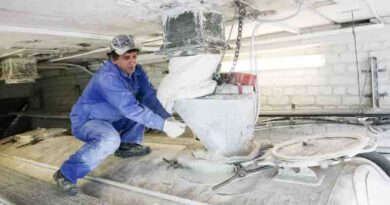Agricultural sectors impacted differently by rise in input commodity prices: European Union
10 October 2021, EU: The EU agri-food sector is confronted with the surge of commodity prices – notably due to the recovery of the EU, US and Chinese economies. The increase of energy and transport prices and the consequences of the spread of the COVID-19 Delta variant, in particular in Asia, are having a disruptive impact on supply chains across the globe.
In this context of tensions, the autumn 2021 edition of the short-term outlook report, published on 8 October 2021 by the European Commission, presents a detailed overview of the latest trends and further prospects for each of the agri-food sectors covered.
Arable crops
EU cereal production is on the rise, with a projection of 294.8 million tonnes for 2021/22, a 5% increase compared to last year. This growth is mainly supported by the recovery of wheat production, estimated at 131 million tonnes, 11.9% higher than last year. With high prices and favourable conditions for pasture in the EU, the use of cereals for feed is projected to be stable for 2021/22, at 162.2 million tonnes.
EU oilseed production recovered from last year’s low, estimated at 30.4 million tonnes for 2021/22, a 10% increase compared to 2020/21. Similarly, EU production of protein crops is expected to reach 4.8 million tonnes in 2021/22, a rise of 11.3% year on year. This is mainly thanks to an increase in area of 13.4%.
Regarding sugar beet, the forecast for 2021/22 is more favourable than last season, with a yield forecast of 75.1 tonnes per hectare. EU sugar beet production could reach 113 million tonnes, an increase of 13.6% compared to the previous season.
Overall, with positive prospects and high prices, arable crops farmers should be able to absorb the increase in input prices.
Specialised crops
EU olive oil production is forecast to be at 2 million tonnes for 2021/22, at the same level as last year. The expected good year was hampered by a hot and dry summer in some producing countries. EU exports are expected to increase in 2021/22 and could reach 860 000 tonnes.
As for apples, EU production is expected to increase by 10% in 2021/22, reaching 12.5 million tonnes. This increase mainly comes from Polish production, with an increase in area harvested and favourable weather conditions. This will put pressure on prices but consumption will remain strong.
A 3% decline for EU orange production is projected, reaching 6.4 million tonnes, driven by a drop in Italian production due to adverse weather conditions. In terms of consumption, fresh oranges are remaining high, replacing the consumption of processed orange juice.
Animal products
The situation of the animal products’ markets is mixed. Prices in the beef, poultry and dairy sectors are good. However, with feed and input prices rising, the producers’ margins might be squeezed. Extensive dairy and beef farms should benefit from the good availability of grass this year.
Milk and dairy products
EU milk collection is projected to grow by 0.3% in 2021, compared to the previous year. The dairy herd is expected to decline by 0.9%. However, it could be compensated by growing yields, up 1.3%, lower than originally anticipated.
Currently cheese continues to be the main processing option, supported by export growth. Overall, EU cheese exports could increase by 4% in 2021. However, domestic use is estimated to only grow by 0.5%. Retail sales might decline with an increase of foodservice uses. This should lead to a cheese production increase of around 1%, with an expected slowdown to the current growth rates.
As for butter, EU production is expected to remain stable in 2021, up 0.1% compared to 2020. Consumption could grow similarly to cheese, by around 0.6%.
Meat products
EU beef production is expected to decrease moderately, down by 0.5% in 2021. This is mainly due to a reduction of cow herd coupled with lower demand in food service. Exports to high-value markets such as Japan, Norway and Hong-Kong are increasing, which should lead to an overall 2% rise for beef exports in 2021.
The EU pigmeat market is facing difficulties, with a significant rise in production (up 4.1%) in the first half of 2021, combined with demand slowing down. This led to falling prices, when producers are faced with high costs. However, production increase is expected to slow down, with a 2021 yearly production growth of 1.7%.
The poultry sector is also going through a challenging situation, with lasting effects of the avian influenza (AI), reduced food services demand and high feed costs. Production is expected to decrease by 0.9% in 2021. EU exports are impacted by AI-related bans, resulting in a drop of 5% in 2021.
Also Read: Paddy procurement in Haryana is 1,46,509 MT and in Punjab is 1,41,1043 MT
Finally, EU sheep and goat meat faces supply shortages both at EU and global level; leading to high prices. The EU production is projected to increase by 1.3% in 2021. In terms of trade, the high prices as well as the supply shortage are keeping the products in the EU, limiting trade of sheep and goat meat.















